Greetings, dear readers! We are once again under our own roof and happily in reach of wireless services. Thanks to everyone for their good wishes on our journey. My trepidation about the cruise proved groundless; no seasickness at all. It was smooth sailing al the way.
As I mentioned in my last post, we set off from Venice and finished up in Rome, with stops in between comprising three cities in Croatia: Rovinj, Split and Dubrovnik, on to Kotor in Montenegro, Taormina in Sicily, and Sorrento, then finally, Rome in mainland Italy. Seasoned cruisers will be well aware of the advantages of travelling by ship, but it was all new to me: not having to unpack and repack, find places to park or restaurants to eat. It’s a very relaxing way to travel, and get a taste of places to which we may wish to return for a more in-depth visit. Accordingly, I’ve prepared a snack plate of pictures with the highlights of each of the stops, to tide us over until I have time to prepare the full monty, as it were.
Starting with Venice – what can I say? It’s one of the most romantic cities known to man or beast. I’ve restricted myself to two pictures only, as I could go on forever with photos of canals lined with colourful houses, gondolas propelled by skilled Gondoliers in traditional black & white striped jerseys, historic landmarks such as the Rialto Bridge and the Bridge of Sighs. To say nothing of Spaghetti con Vongole, a meal in which I thoroughly and gloriously overindulged throughout my time in Italy, evidenced by the extra upholstery I am currently sporting. 🙂
On to Rovinj, a small fishing village in Croatia, with a population of about 15,000. Steeply pitched streets lead up to St. Euphemia’s Basicilia, whose tower you can see below. St. Euphemia is famous as a Christian martyr under the orders of Emperor Diocletian, about whom we will hear more. A rather nasty fellow, but the sound of him.
A view from the courtyard of St. Euphemia’s Basilica.
It was a market day when we arrived, with lively strings of peppers and garlic for sale.
Next up was Split, home to Diocletian’s Palace, constructed in the fourth century AD. Today Split, along with Dubrovnik, are probably best known as film locations for the Game of Thrones. In reference to the show, there were some very interesting (?!) S&M outfits for sale in the basement market stores of the palace…
We declined to climb the steps of the tower of the Cathedral of St. Dominus (I get claustrophobic in tight spaces), but we really enjoyed the interior of the Cathedral. This view is looking straight up into the dome.
We saw plenty of cats on the journey – some real, some man-made. I loved this lion statue on the steps outside St. Domnius’s Cathedral in Split.
This cat was quite at home strolling into one of the official buildings in the Town Square in Dubrovnik.
I peeked in after him. Aren’t the columns stunning?
And this guy with the wonky ear was quite friendly.
We took a combination driving tour of the surrounding area and walking tour of Dubrovnik, with an excellent guide we sourced through TripAdvisor. On the whole, the guides we found ourselves were better quality and less expensive than the excursions offered through the ship.
Market day in Dubrovnik tempted us with plenty of fresh fruit, including seeded pomegranates. Someone went to a lot of trouble!
It was a gorgeous hot day, and we enjoyed the walk atop the walls that surround the city of Dubrovnik.
The person with the camera gets to avoid having her picture taken. Her travel companions – not so much!
As the day progressed, the town cleared out, with fewer people milling about. Millions of footsteps have polished the limestone roads to a shiny surface, treacherous in the wet.
On to Kotor, where another climbing challenge awaited. For others! The Church of St. Mary of Remedy is only partway up to the Fortress of St. John at the top. It’s about 4.5 km or 3.5 miles to complete the circuit. We had only a few hours in port, so we contented ourselves with strolling around the town.
The lamps for sale were a standout in a town that sold a lot of touristy kitch.
But there were cats, of course!
This guy had his tongue sticking out while he basked in the sunshine.
Not only are there real cats, but there are also sculptures of cats.
Back to the main square, we visited the Church of St. Nicholas, snuggled against the cliffs soaring in the background.
We were one full day at sea after that, as the ship worked its way round from Kotor, Montenegro to Taormina, Sicily, home to St. Etna, still an active volcano.
The highlight of the stop in Taormina was the Greek, later Roman, Amphitheatre located high in the hills. During the summer it’s used for concerts as the acoustics are still excellent. Andrea Bocelli had performed in late August to a sold-out crowd.
Can you imagine how spectacular it must be to drink in the view while enjoying such a concert?
There is our ship, patiently waiting for us to return.
Aboard once more, we set out for Sorrento.
Though we stopped in Sorrento, it was really just to catch the tour to Herculaneum, a somewhat inconvenient hour and a half away by bus, but I wasn’t about to miss a chance to visit Pompeii’s smaller cousin. Herculaneum was buried under a much deeper layer of rock and ash than Pompeii. Though Herculaneum was discovered first, excavators eagerly moved their sites to the easier task of unearthing Pompeii, leaving Herculaneum to slumber in intact, and thus the majority of its excavation took place more recently.
The unfortunate Inhabitants of nearby Pompeii were suffocated with ash when Mount Vesuvius erupted in October 79, AD, but the people of Herculaneum suffered a somewhat different fate.
A new study of residue on skeletons found at Herculaneum indicates that the town was hit with 400 to 900-degree temperatures, causing the people gathered in the boat sheds at what was then the water’s edge of the town, to instantly vaporize, leaving behind 300 largely intact skeletons.
Herculaneum was the equivalent of cottage country for fairly wealthy people, with richly coloured mosaics and frescoes adorning the walls of their upscale homes.
Last stop, Rome. We stayed near the Piazza del Popolo and enjoyed wandering through the historic district of Rome in the early evening.
I enjoyed revisiting some of Rome’s famous sites during our three days there, including the Trevi Fountain, which has been fed by water from Aqua Virgo Aqueduct since 19 B.C. If only today’s construction were as reliable and long-lasting.
The Fontana del Quattro Fiumi or the Fountain of the Four Rivers in Piazza Navona is fed by the same Aqueduct, though the fountain is of more recent construction, built by Gianlorenzo Bernini, one of the most well-known, talented sculptors of the 17th century.
Now it’s a magnet for selfie-takers. Mama Mia!!!
Just a short distance away is the incomparable Pantheon. As described by Wikipedia, the Pantheon “is a Roman temple, now a church, in Rome, Italy, on the site of an earlier temple commissioned by Marcus Agrippa during the reign of Augustus (27 BC – 14 AD). It was completed by the emperor Hadrian and probably dedicated about 126 AD. Its date of construction is uncertain because Hadrian chose not to inscribe the new temple but rather to retain the inscription of Agrippa’s older temple, which had burned down.”
The magnificent dome is perfectly symmetrical and provided inspiration for Michelangelo in building St. Peter’s Basilica. Almost two thousand years after it was built, the Pantheon’s dome is still the world’s largest unreinforced concrete dome. The height to the oculus and the diameter of the interior circle are the same, 43 metres. Isn’t it incredible?
Thousands of wheelbarrows of sand were carted into the space below the dome, to support the roof while under construction.
The interior isn’t too shabby, either.
Here’s the view from the terrace atop Hotel Piranesi on the final night with our travelling companions, who were leaving the next day.
We enjoyed a final bottle of wine (or two) to celebrate a marvellous trip.
The next day, Glenn and I travelled a little way out of Rome with Cinzia Possentti, a marvellous guide (and now friend) with whom we have previously toured, to see Hadrian’s Villa, Villa d’Este and the Tivoli Gardens. What a treat that was!
More a small city than a country estate, Emperor Hadrian’s Villa is a massive archaeological site still being excavated.
Some of the sculptures remain, giving a hint of the former glories of this magnificent site. In case you’ve ever wondered what a caryatid is, puzzle no more. As shown below, caryatids are sculpted female figures serving as architectural supports, in place of a plain old column or a pillar, supporting entablatures on their heads.
That was just the warm-up to Villa d’Este, the nearby 16th-century palace of Cardinal Ippolito II d’Este. This is just one of the many frescoed ceilings in the palace. I could go on for days here, but won’t, as we are nearly at the end of our tour.
Ok. Two pictures
Now, we’ll just step outside onto the terrace and admire the view.
But wait, there’s more! Step right this way, to see the incredible system of fountains just over the edge here. All 51 of them, complete with 250 gushes, 60 pools of water, 255 waterfalls and 100 tanks. All fed by gravity – no pumps!
Ok – that’s really the end. Thank you for joining me on this whirlwind tour of many stops. Just a taste tester for now. 🙂
I’m sharing this post with Between Naps on the Porch.

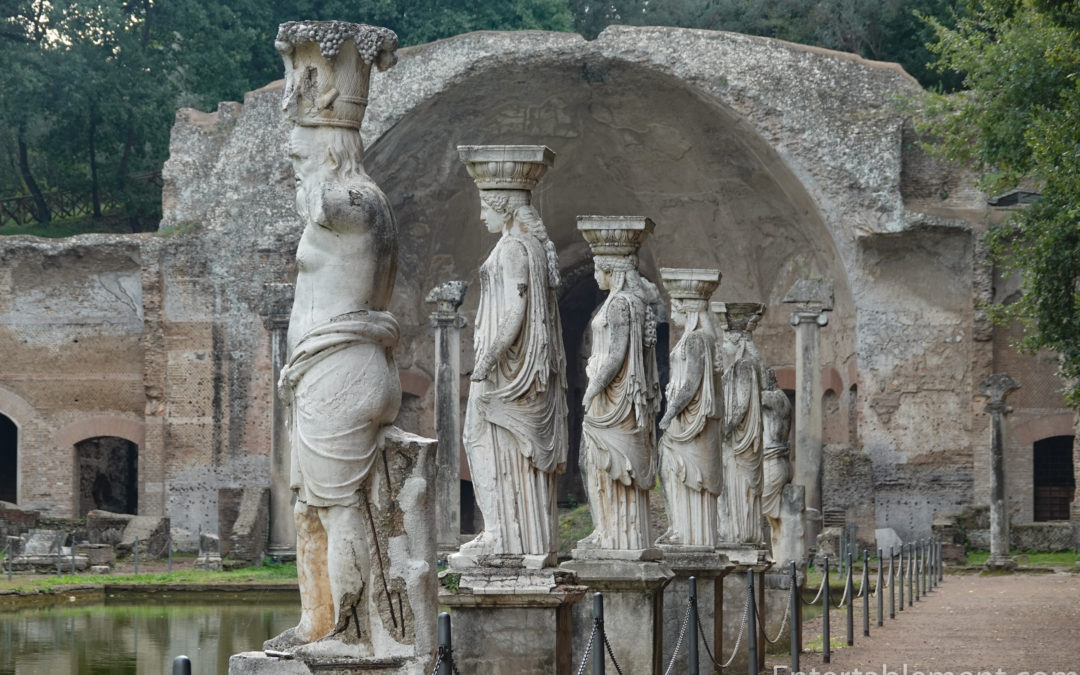
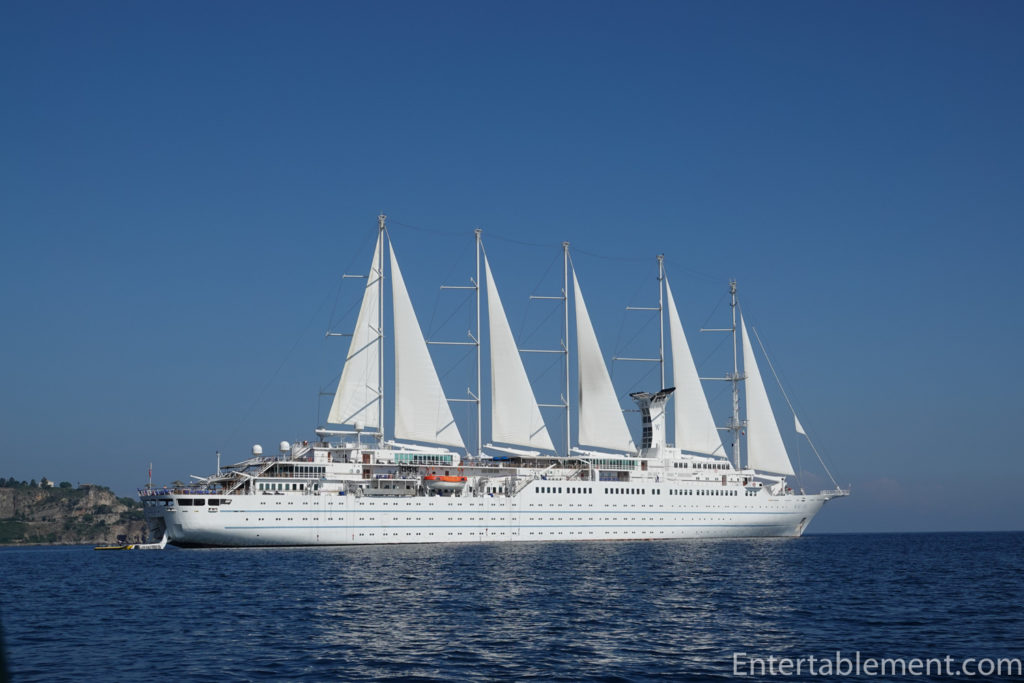
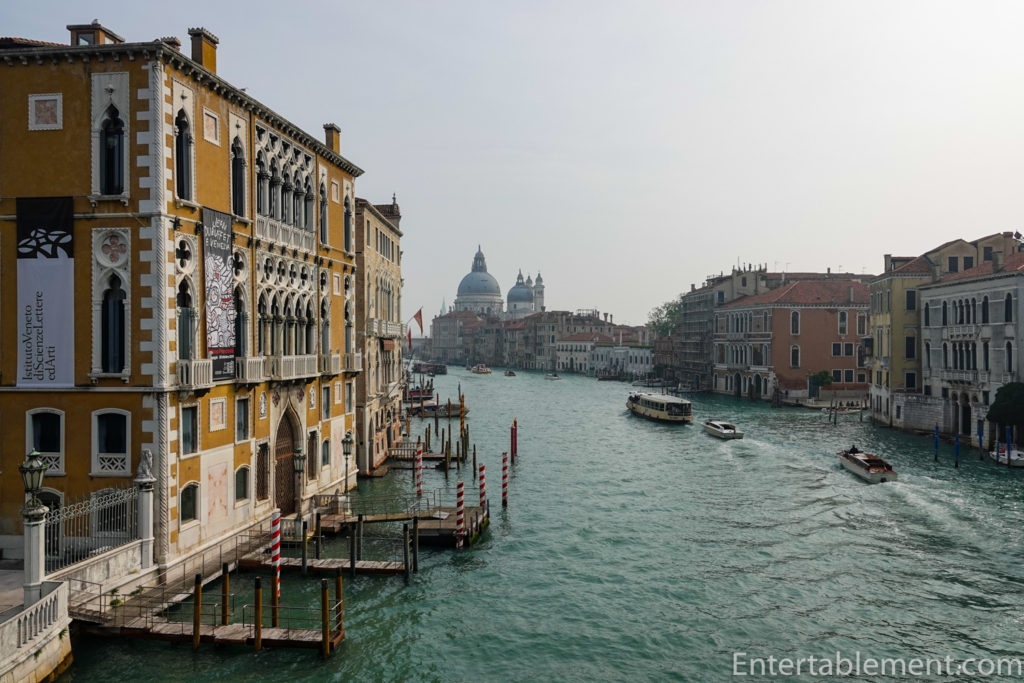


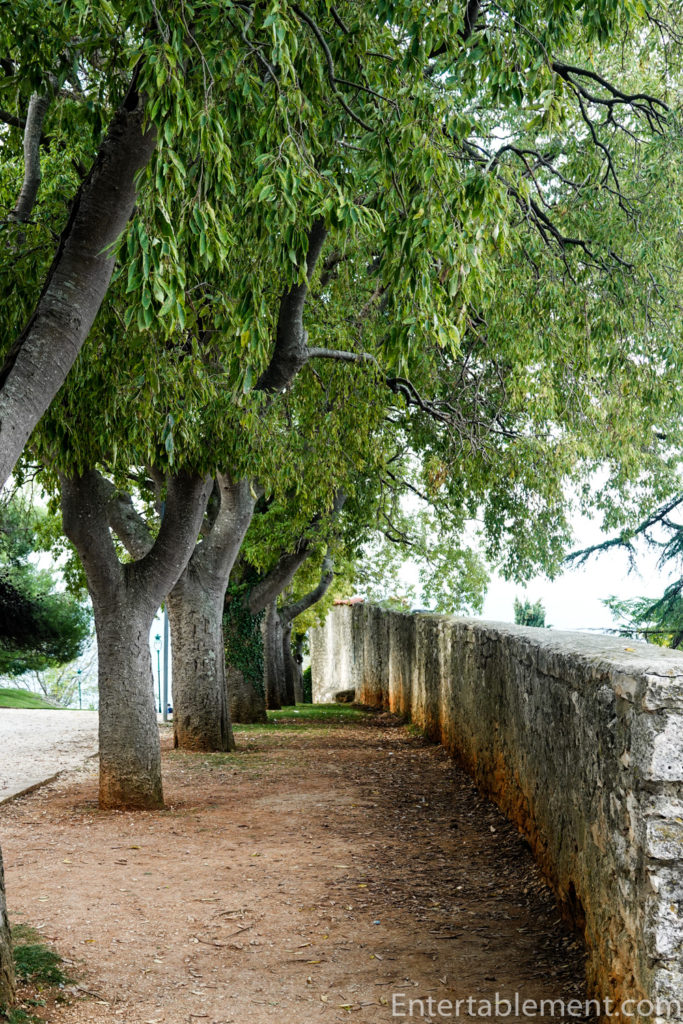

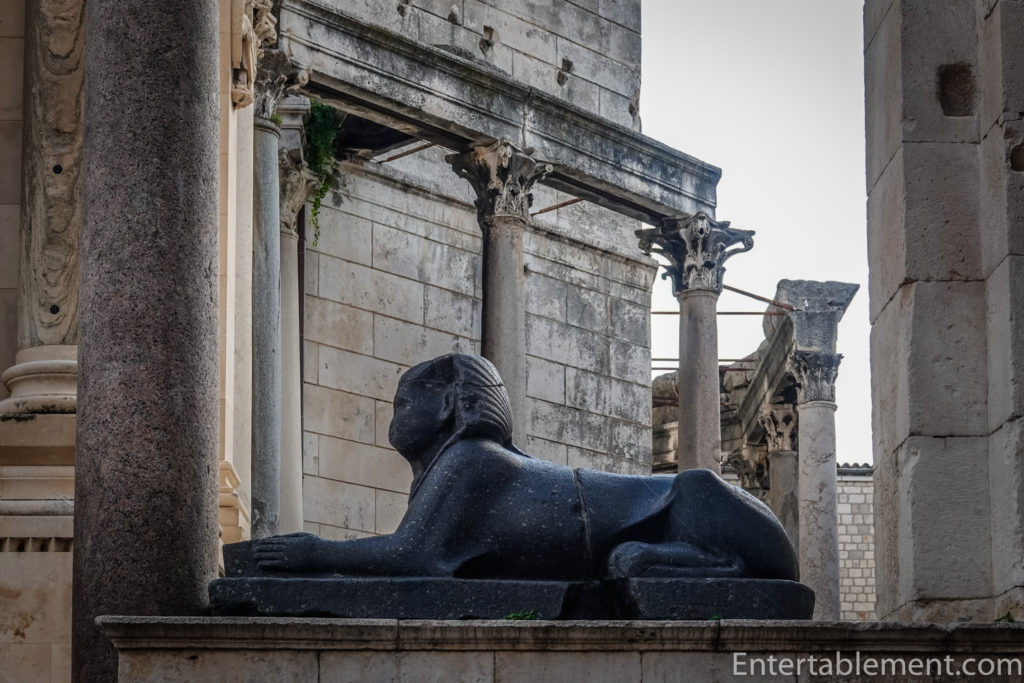

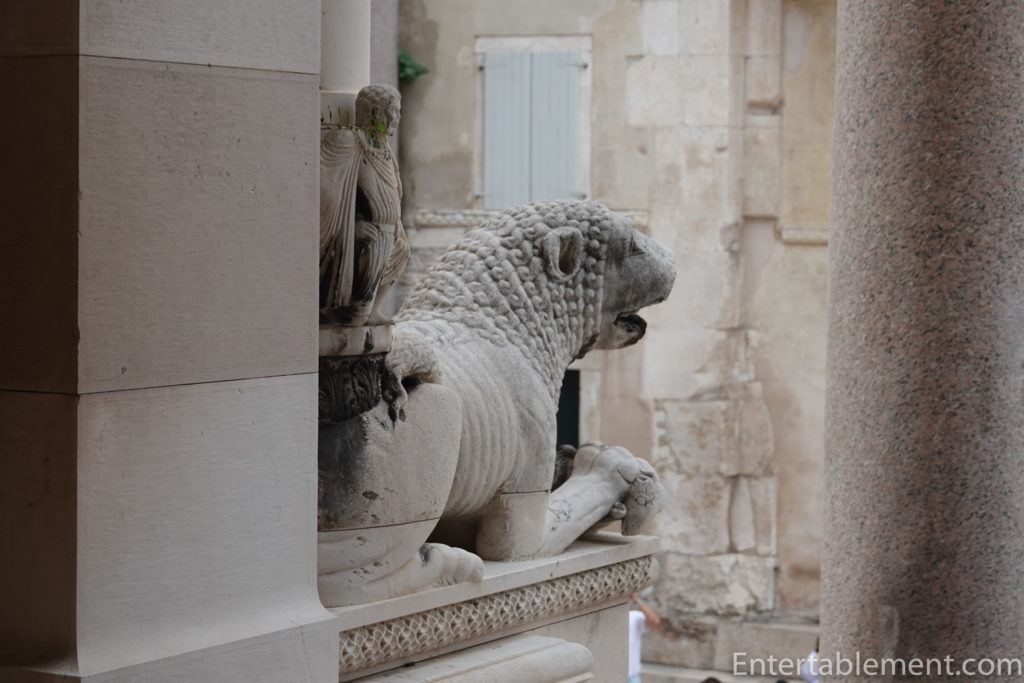
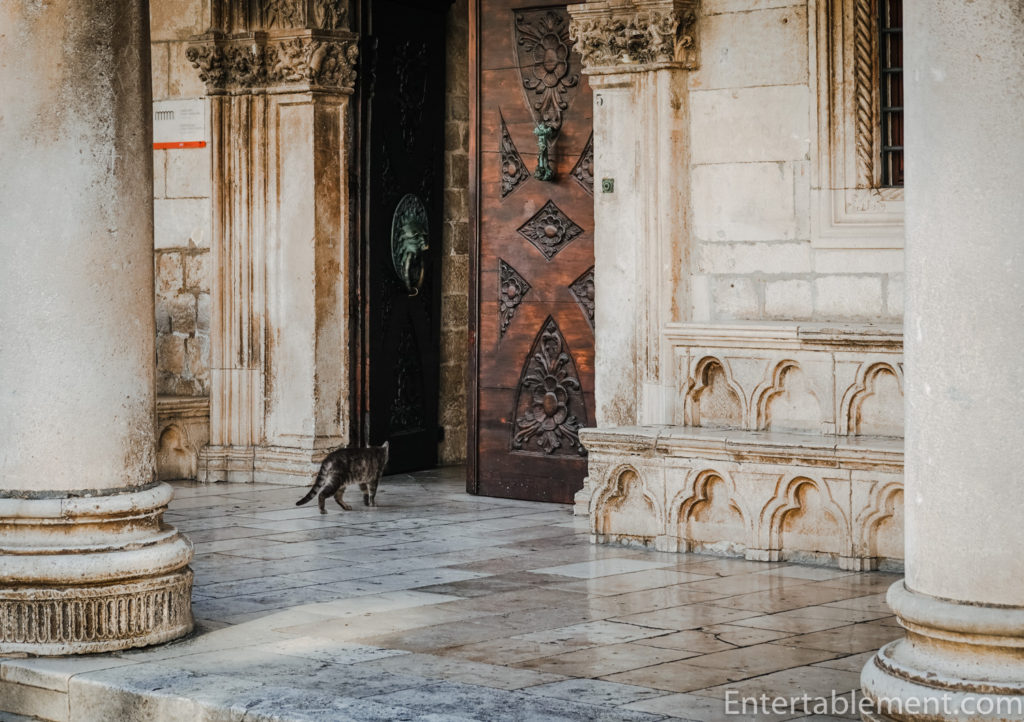

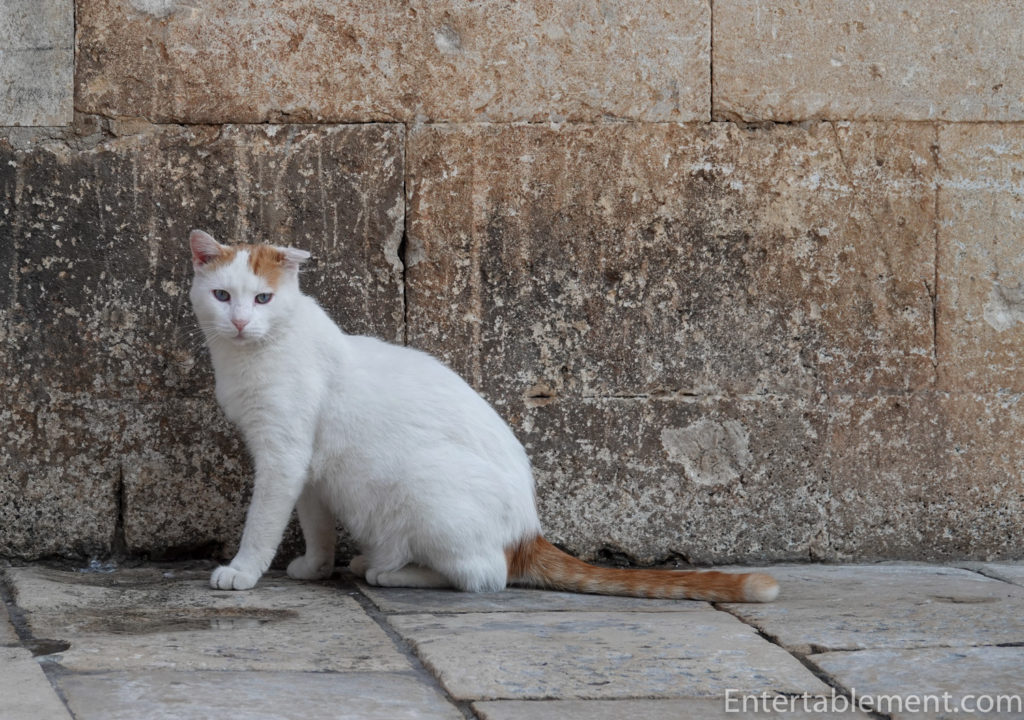
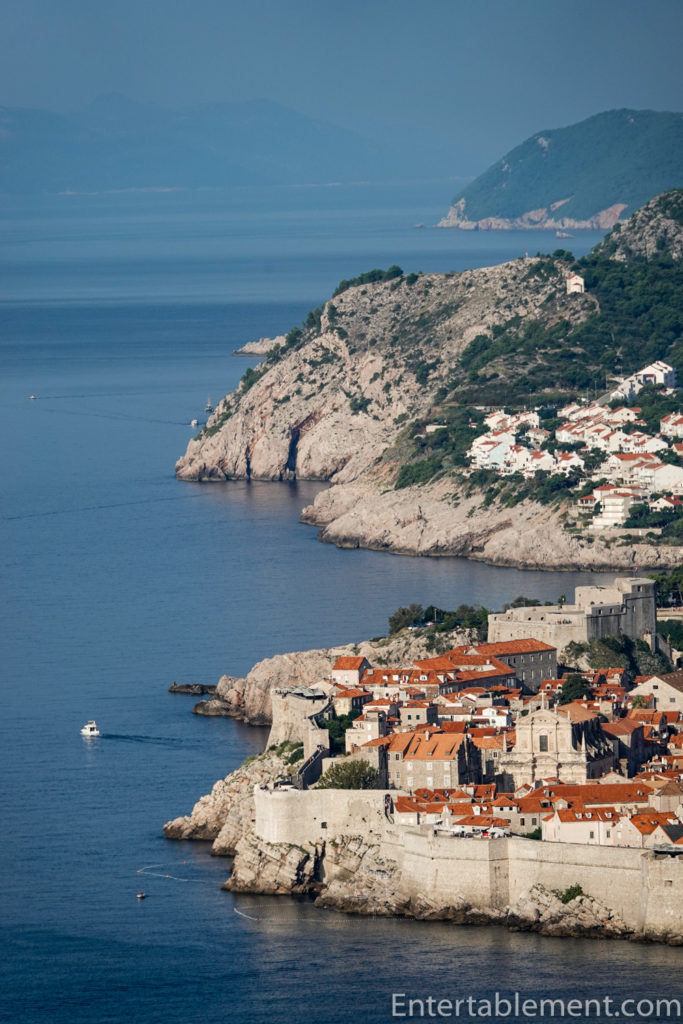
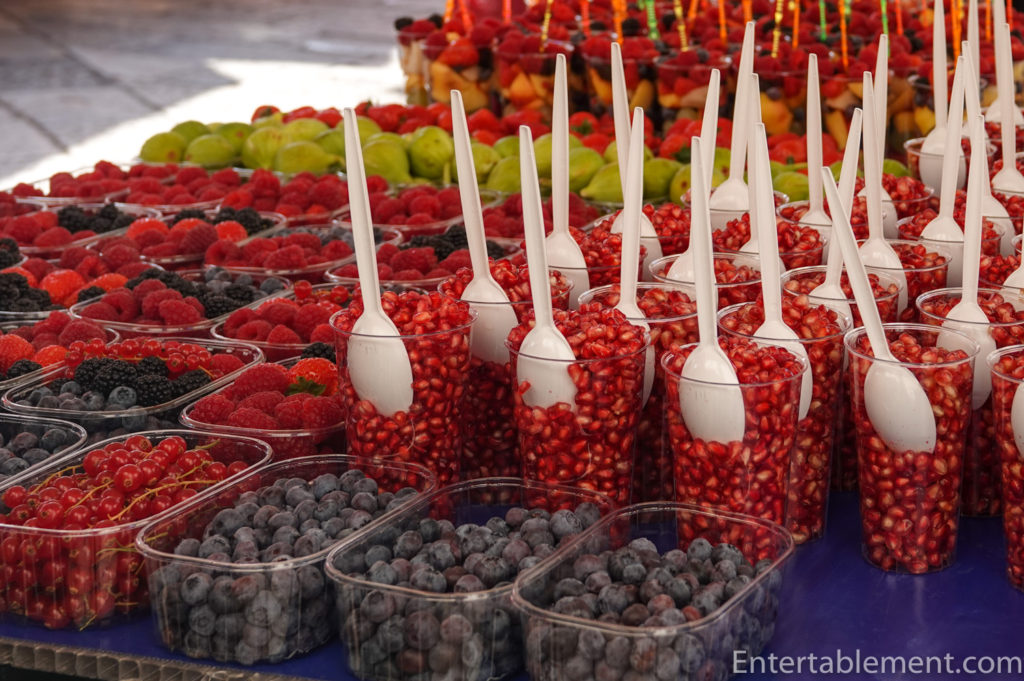


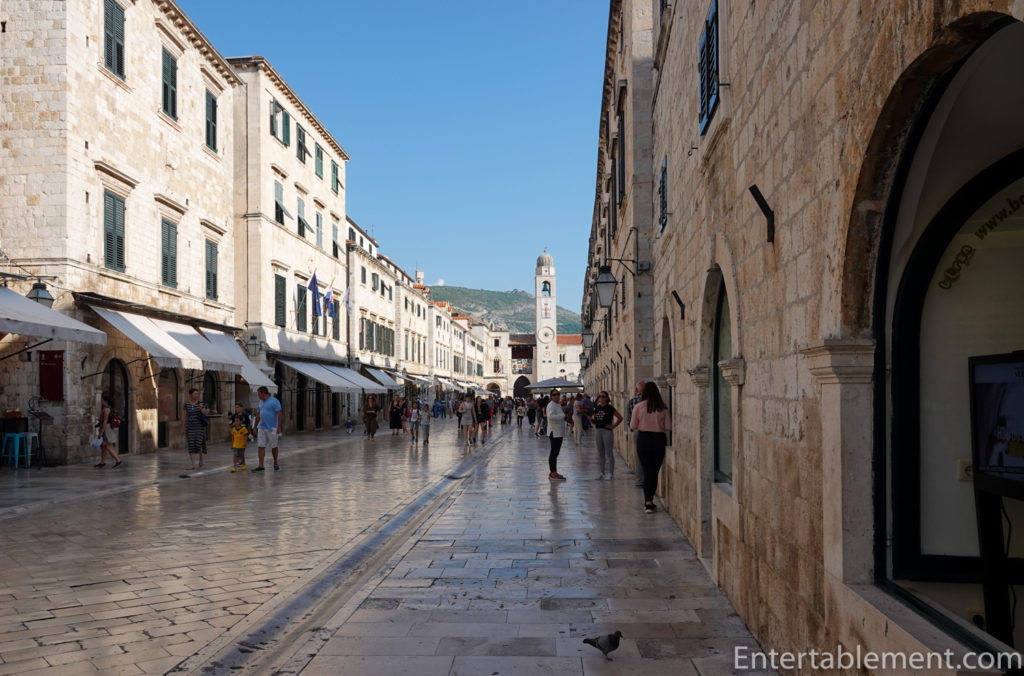

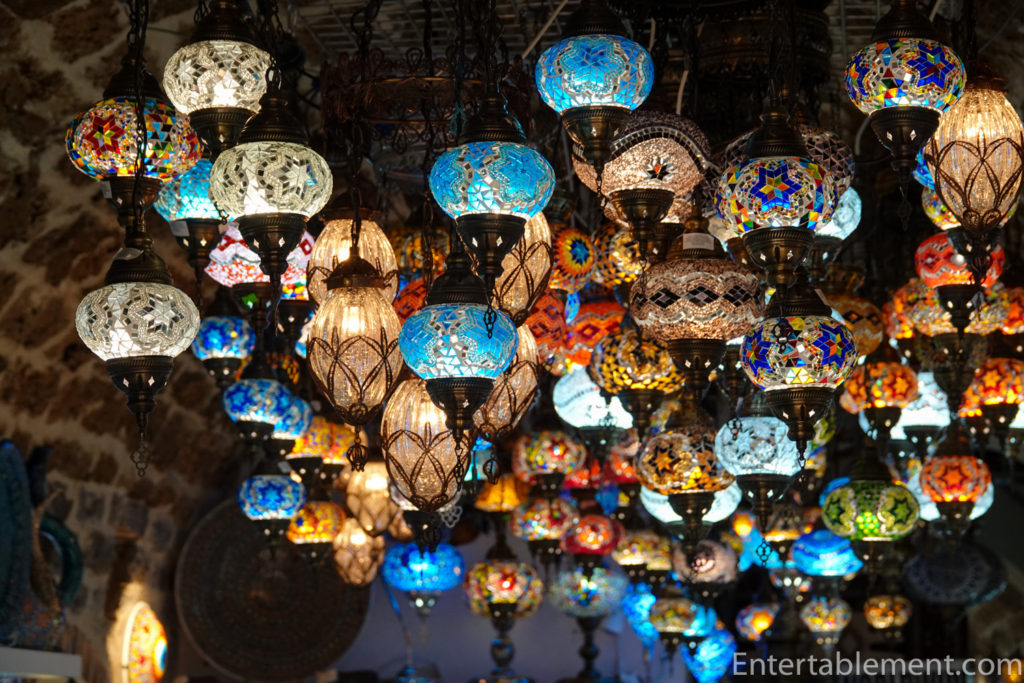
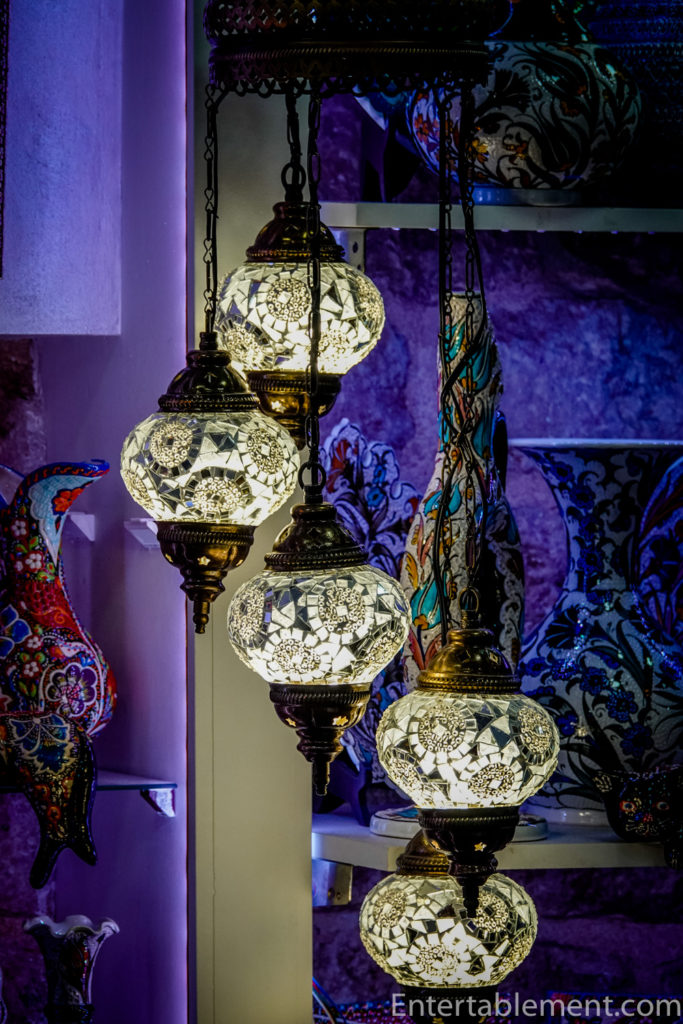




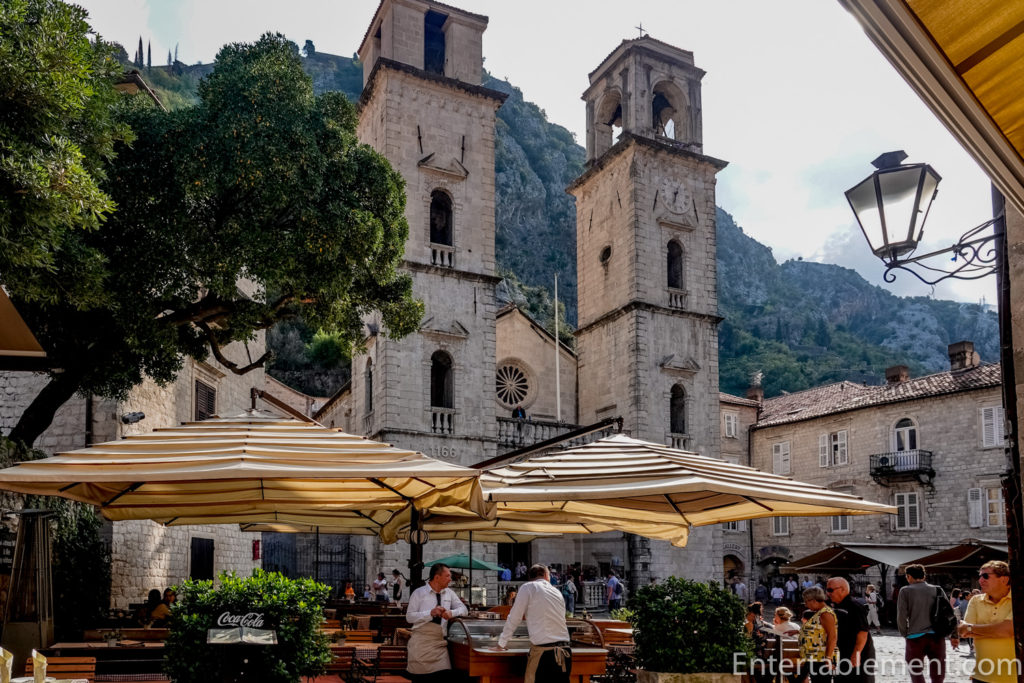
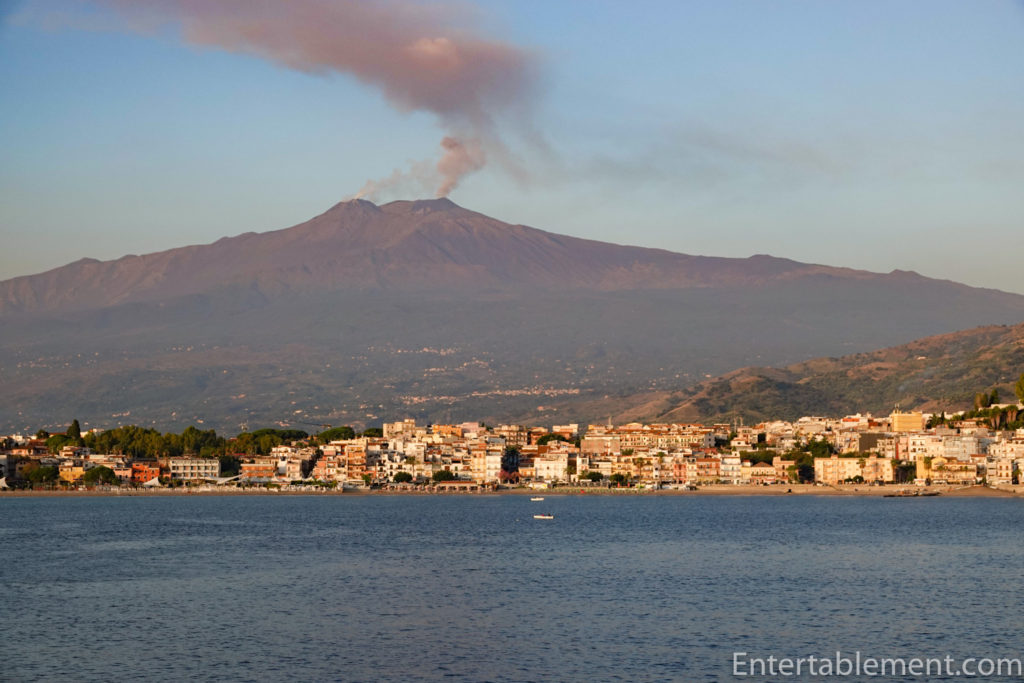

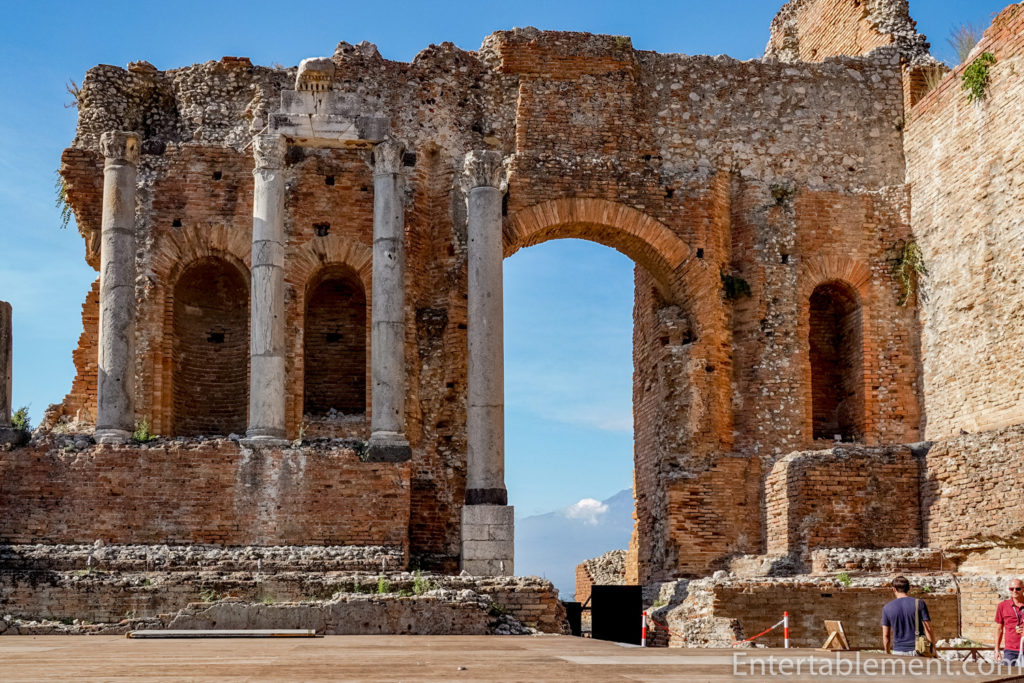
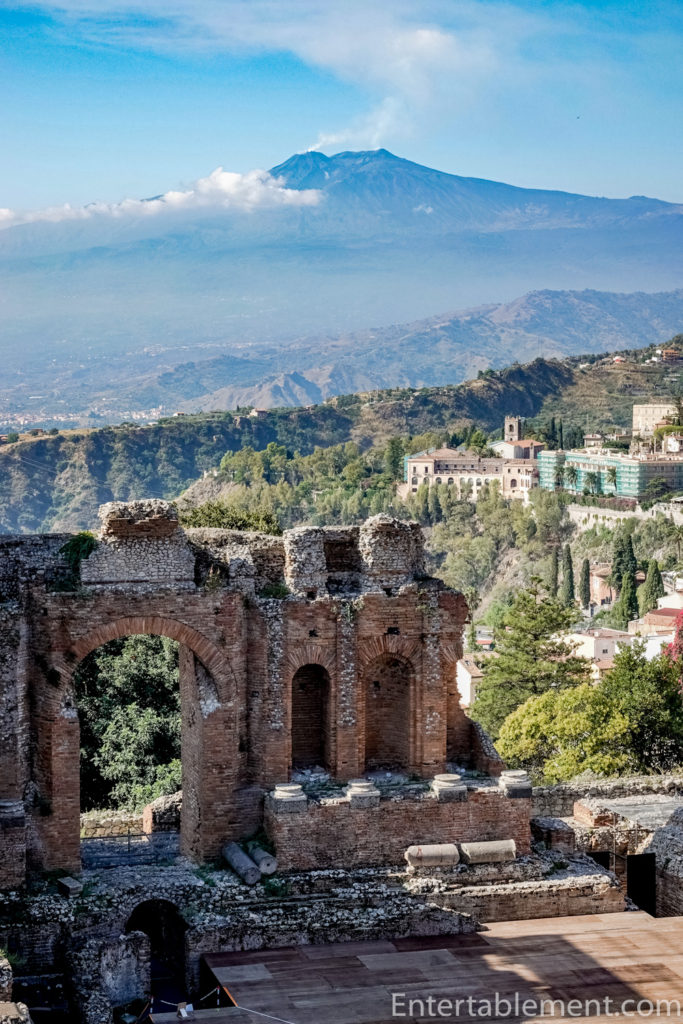


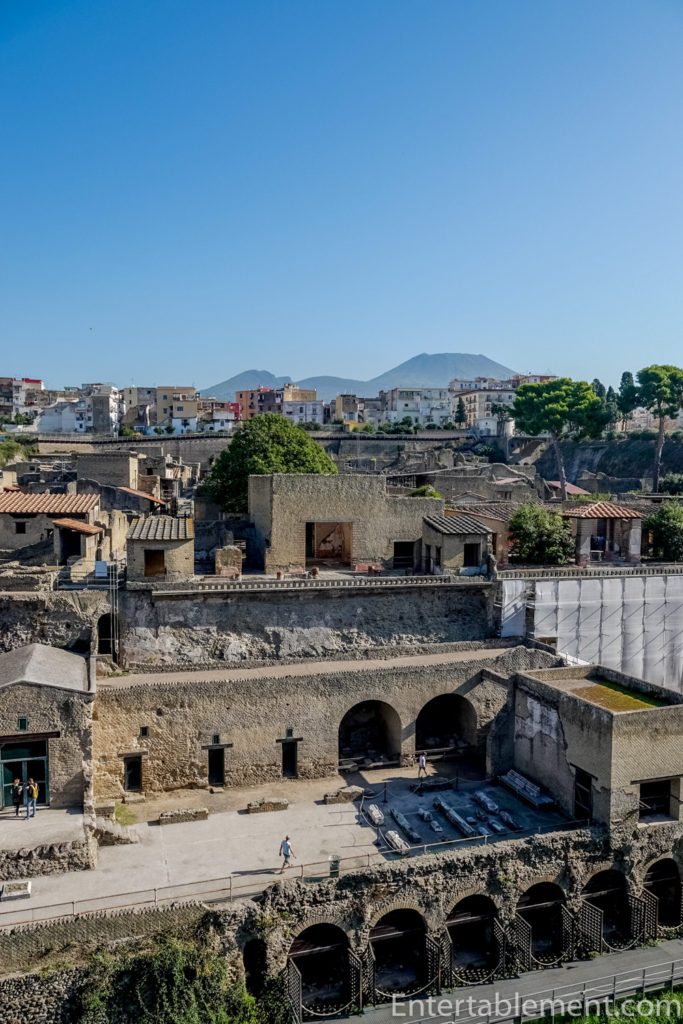


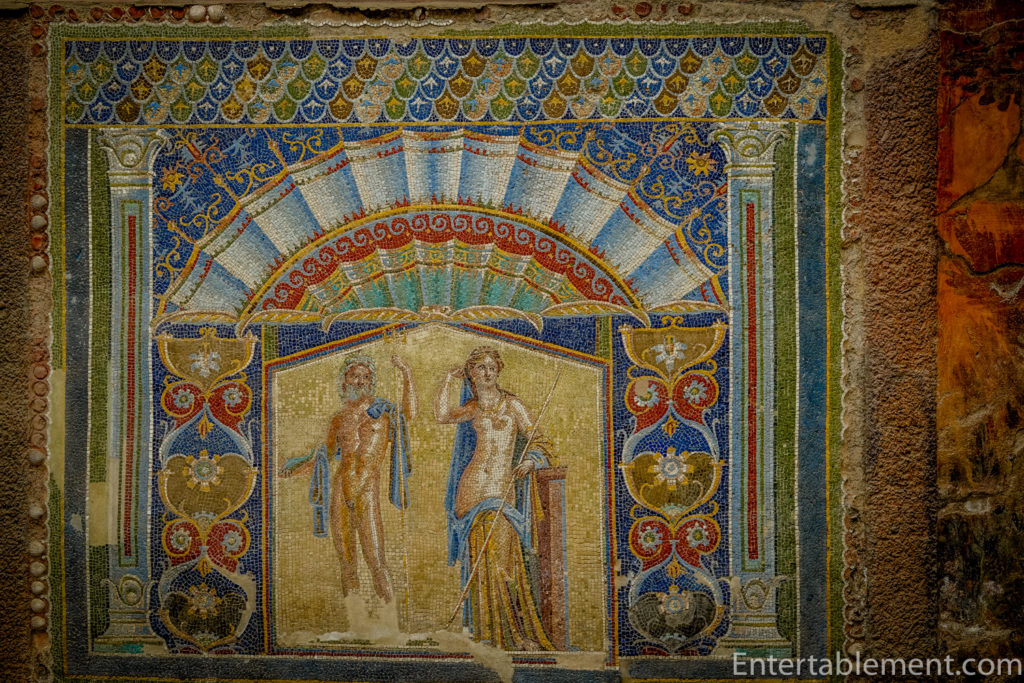
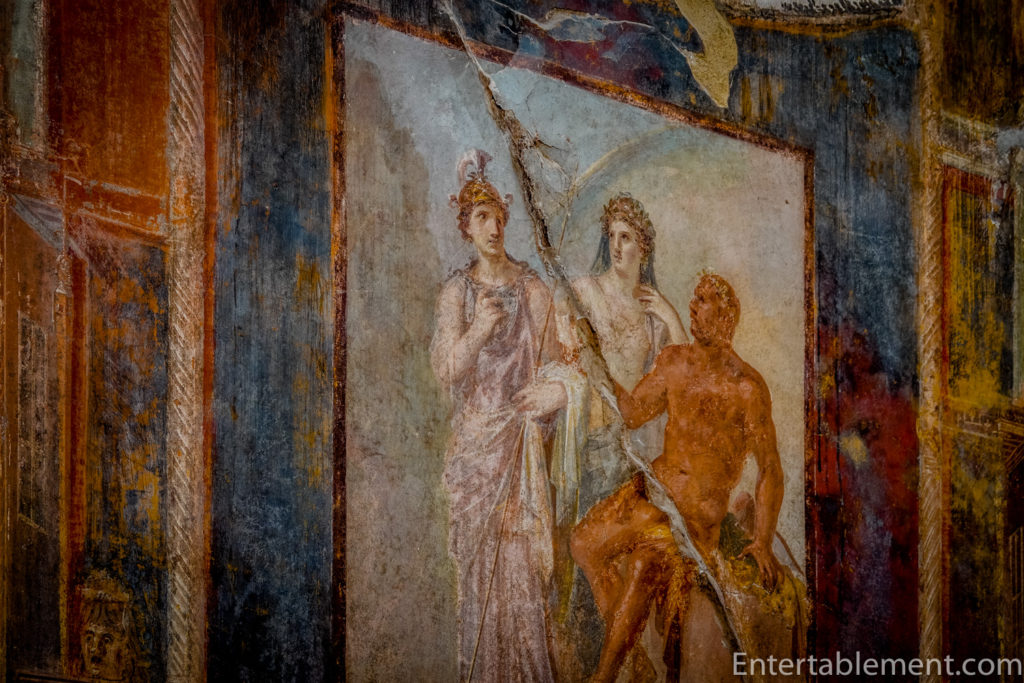
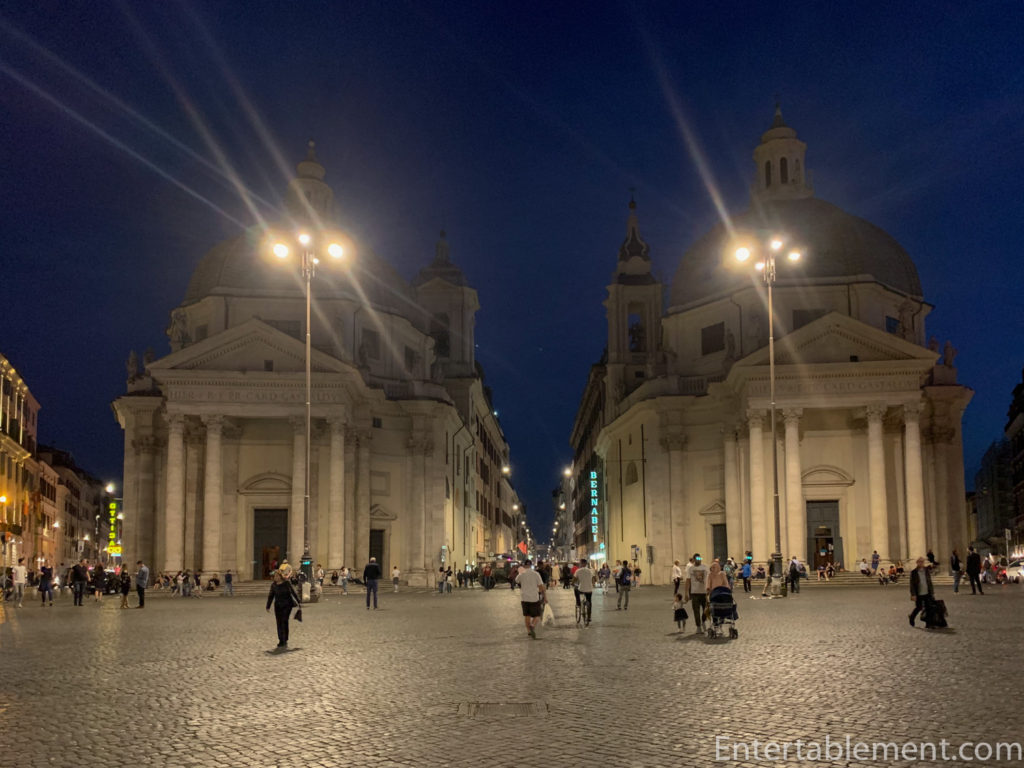







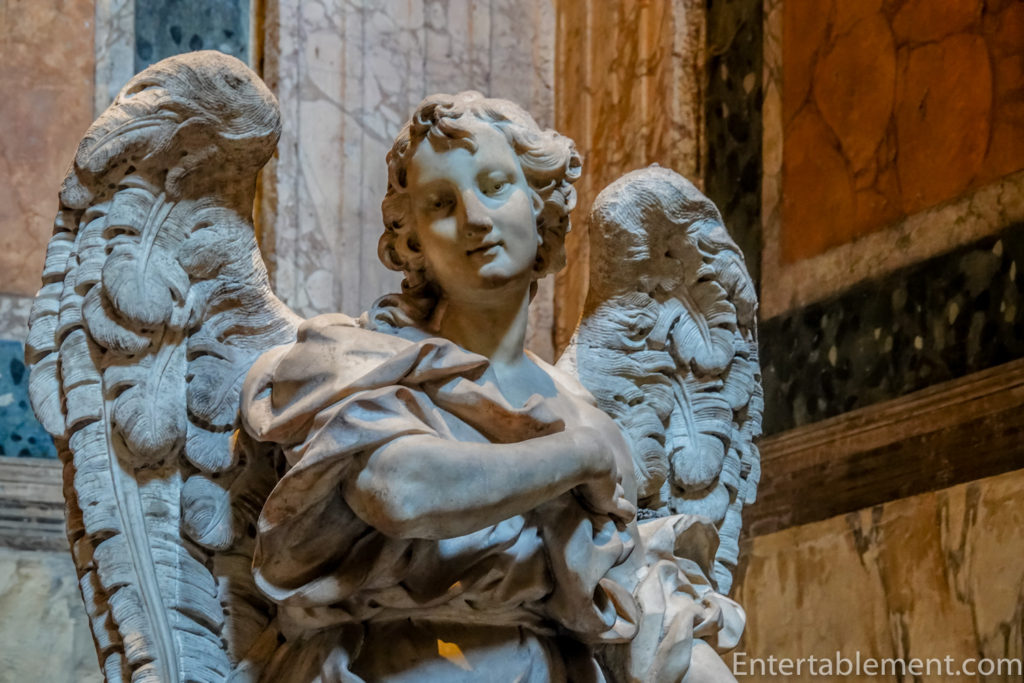

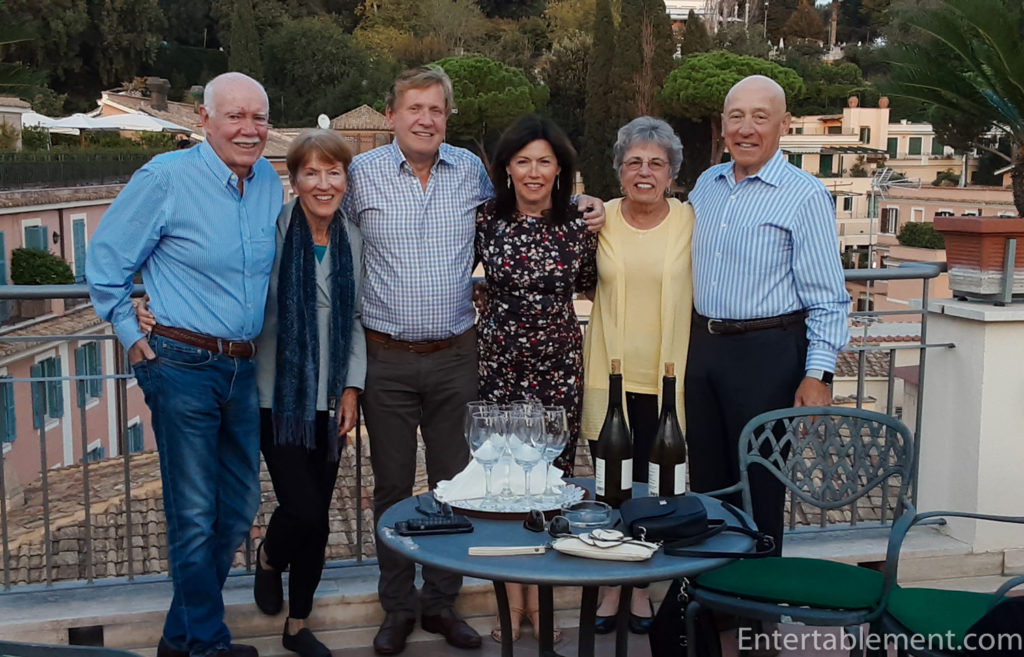
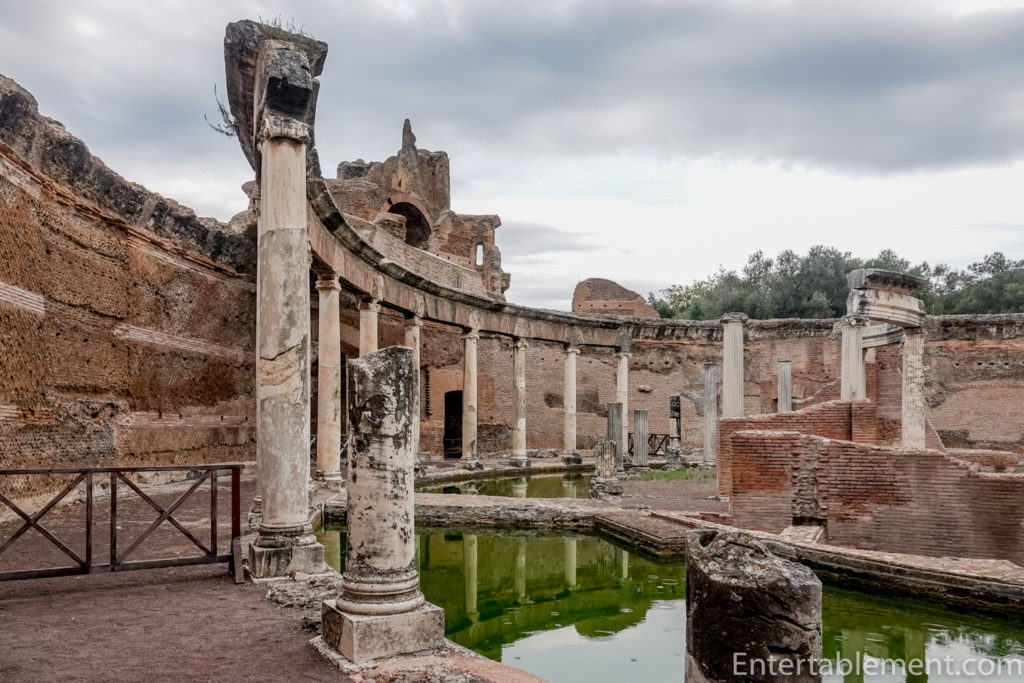
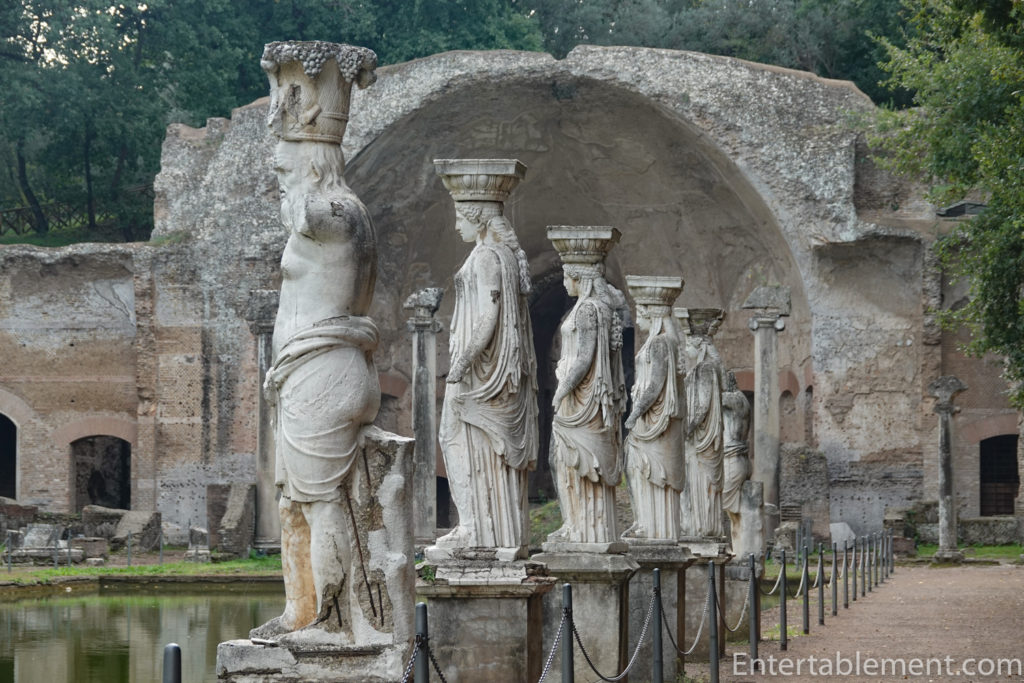
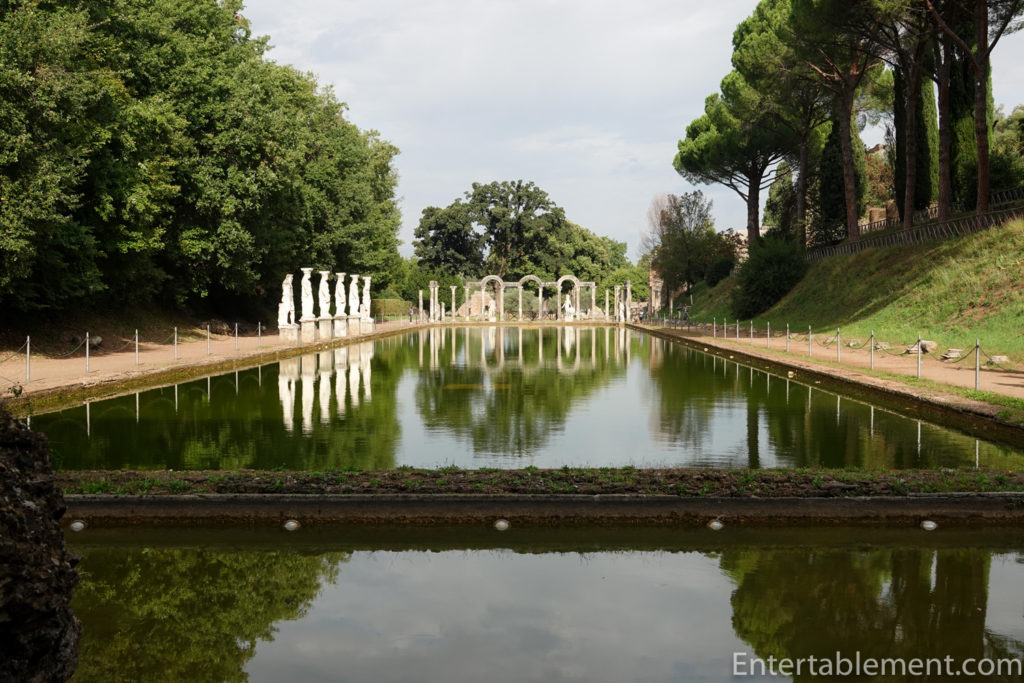

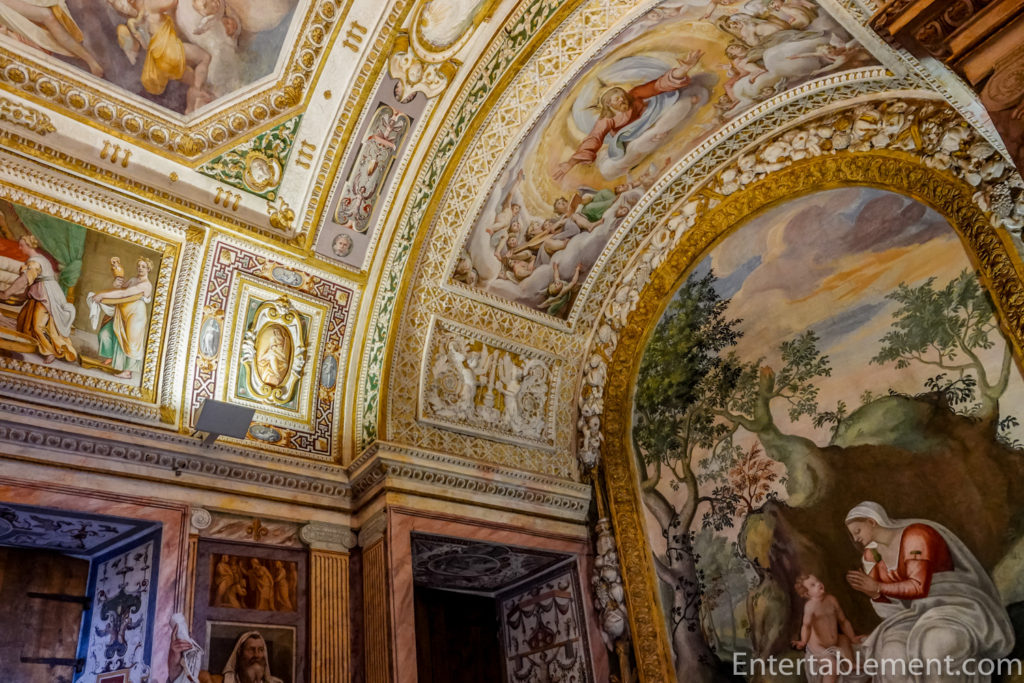
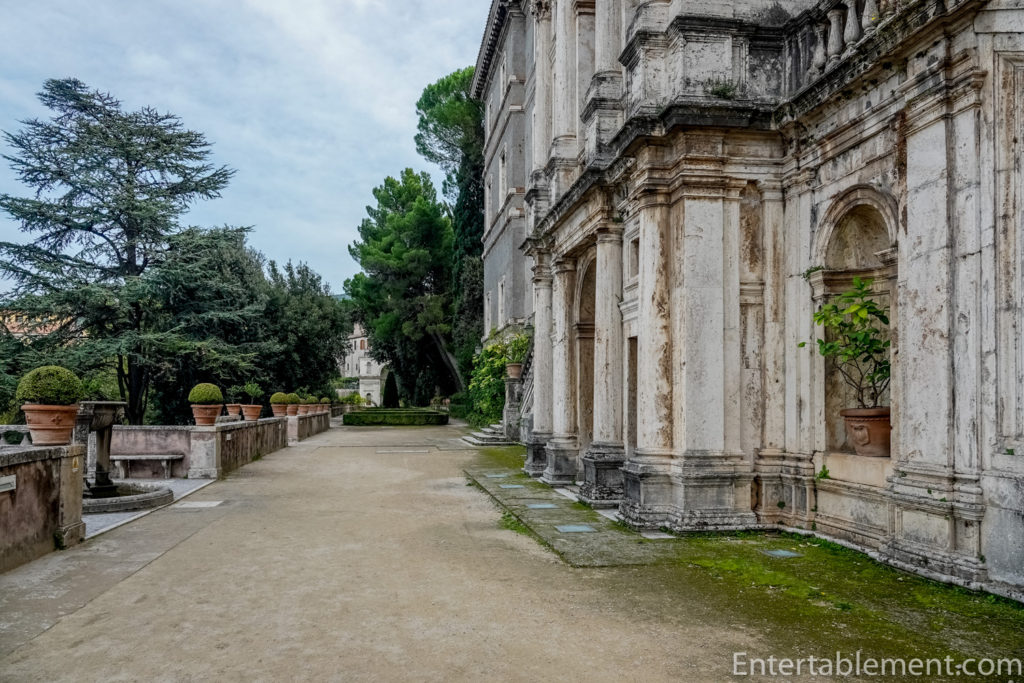
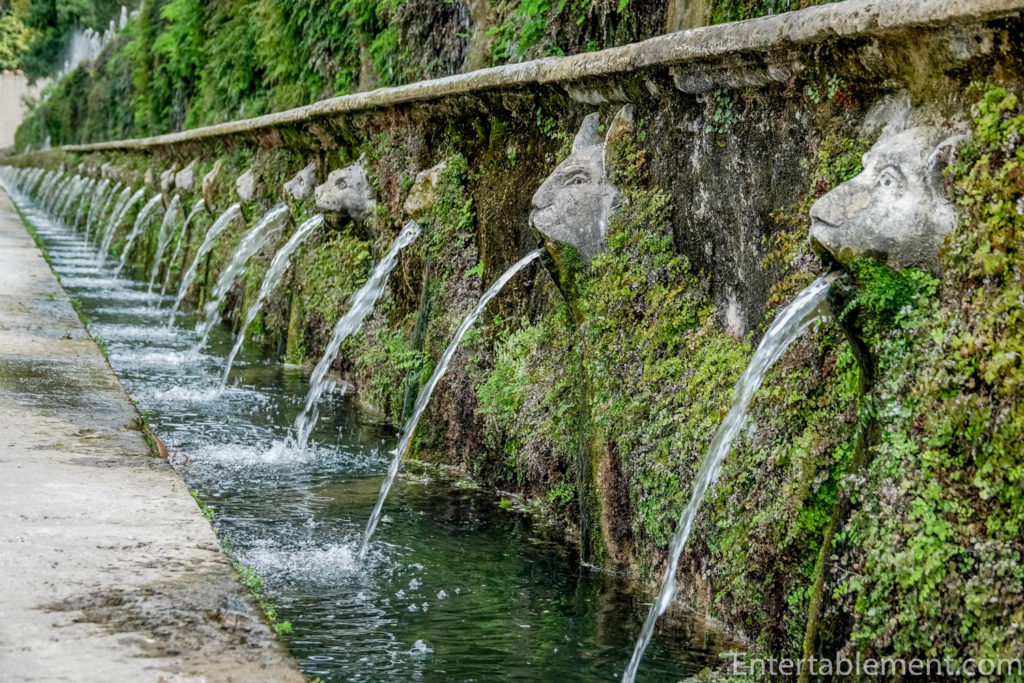
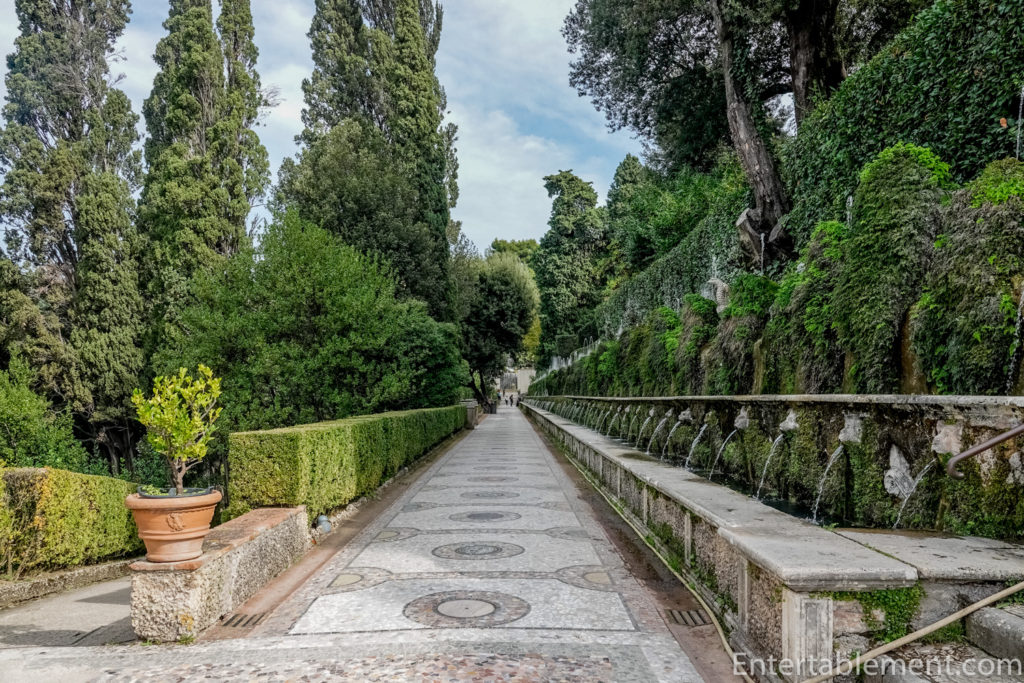






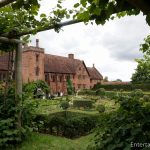


Dear Helen,
We have that white six-light chandelier, with more upscale metal bits. lol. Most of them are made in Turkey, where labour is cheaper. There are men’s choruses that practice inside the dome in Split–hope you got to hear their magnificent singing. Sightseeing by boat gives a completely different impression, doesn’t it? Welcome home!
I really liked the chandelier, Beatrice, and bet it looks even more fabulous with upscaled metal.
No singing in the cathedral at Split, unfortunately. But it wasn’t too crowded, either, so I managed to get a good look at all of the details of the interior, and get some good snaps, too.
Looking back on the pictures, I really appreciate the different perspective of seeing the towns from the water. As you say, very different from the land point of view.
Good to be back!
Wow! We didn’t need to go on this trip and could have enjoyed it vicariously reading your blog. But, we loved every minute of our trip with you, Glen and the Ciriellos. It was amazing and thanks for sharing all of our wonderful memories. An unforgettable trip all in all. Happy memories!
Sniff, sniff… It just wasn’t the same on the last day without you guys. You’d have loved Villa d’Este with its breathtaking water garden and Villa d’Andrea (from whence a lot of the building material for Villa d’Este was purloined by the bye). Hope you’re enjoying the rugby and managing to stay out of any pub brawls. 🙂 Thanks for being such fabulous travelling companions.
See you soon!
Oh my gosh Helen – what a fabulous trip! Your photos are just stunning! I’d love to frame several of them, but I’ll just keep coming back here and look again. 🙂 I love the beauty and history of the Pantheon. (I actually sang there on a choir trip to Europe years ago – it had the most amazing acoustics and was an added experience to the experience of a lifetime!) And Herculaneum – Wow! That could be a whole post by itself! Thanks for this vicariously thrilling mini-vacation!
To sing in the Pantheon must indeed have been the experience of a lifetime! How often do you get to perform in a 2000-year old structure? It’s truly magnificent.
I’d love to do a more complete write up on each location. Time, time, time! It’s one of the few truly limited things, isn’t it? I’ve done a better job than usual sorting the 1700+ pictures from this trip, so am at least in good shape to do the more detailed blogs. I can’t tell you how many thousands of pics I have from previous trips. And the more I learn about photo editing, the more I want to go back and revise previously processed photos. Then there is the better camera equipment, which makes me want to revisit earlier places and start all over. LOL. It’s unending!
Have a wonderful day, Barb.
Helen, just read your comment to Barbara @ Mantel and Table, and I totally agree. Every time I have the opportunity to update my camera equipment, I immediately want to return to previously photographed locations because I can almost taste the improvements that I can achieve with my new gear. You made me smile. So many amazing memories captured in stunning fashion. Congratulations on your results. Are you still traveling with your Sony a6000
(I think)? I love the mini history capsules that you give us. Thanks! CherryKay
Hi Cherry Kay,
Thanks so much for the encouragement. The best thing about blogging is the wonderful people you meet with shared interests. Sure beats the days of forcing friends and neighbours to come and watch slide shows of recent vacations! I’m very grateful to readers here at Entetablement for their participation and lively interaction.
I am still using my Sony RX 100 for travel. With the 24/600 lens it’s good for almost all circumstances. I still use my Nikon 7100 for table shots, and lately, my iPhone 11 Pro – I can get more into the frame than with the DSLR. I also love the portrait feature on the phone. As they say, the best camera to use is the one you have with you,
Have a wonderful day. I hope you’re enjoying the switch to spring.